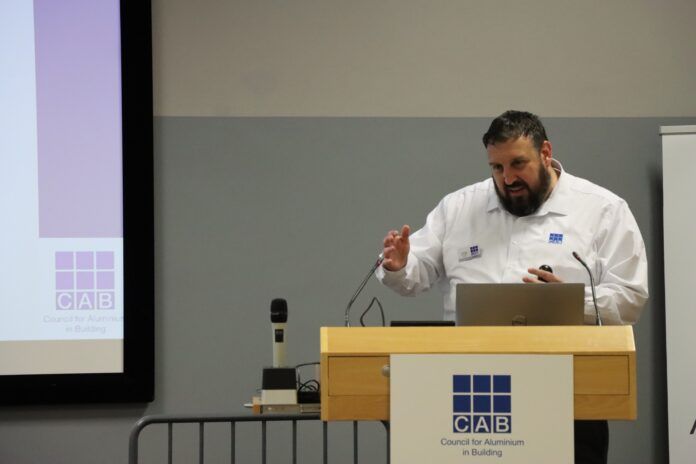
The Council for Aluminium in Building (CAB) has reported a growing number of window installation problems since trickle vents were made compulsory in new-build applications under Part F in June 2022, creating what it’s calling a ‘potential ticking time bomb’ for installers.
Also, a requirement in some replacement applications, CAB has been approached by a growing number of installation specialists, who have been repeatedly called back to site to address moisture-related remedial works.
This includes damage to cill boards, internal plasterboard and oxidisation of internal window profiles.
Dale Pegler, CAB technical director, explained: “We have a number of members who have reported a significant increase in the number of times that they have been called back to site since the since trickle vents were made compulsory, because of ‘moisture-related’ problems.
“The theory is – and I want to emphasise that at this point it remains a theory – the trickle vent cut-outs, allow air to circulate around the external perimeter of the window frame between the frame profile and the structure.
“The external air then acts as a cold bridge to the internal aluminium profiles, increasing the risk of condensation on the internal face of the profile.”
Approved Document F introduced a new requirement for replacement and new build windows to either put back the same level of ventilation in new windows as was there before, where trickle vents were previously present; or to make sure that windows achieved an 8,000mm2 equivalent area (EA) background ventilation in kitchens and habitable rooms.
The requirement for replacement windows in bathrooms is 4,000mm2 EA, while in utility rooms and WCs, there’s no minimum requirement.
“Part F was controversial in that it was introduced a requirement to cut through a window at the same time as introducing new standards for energy efficiency”, Dale continued. “But this is an unforeseen impact. In every window that we’re currently fitting, we could be creating a future problem.
“The challenge is that moisture damage often takes a long time to be visible. The reports of moisture-related callbacks from our members are increasing, and there are patterns, with more complaints in winter when homes have more moisture build up and the outside is cold.”
CAB is collating information from members and appealing to the industry more widely to establish the cause of the problem.
“On some occasions it could clearly be about the quality of the installation, but my hunch is that we’re seeing far too many complaints and that there is more of an underlying issue. The only way for us to establish causality is to track and develop a data set which proves things one way or another. If you have encountered problems, we’d encourage you to get in touch as your input will be vital in developing a full picture.”
He added that CAB was already in discussion with trickle vent manufacturers for their input and dependant on findings, the development of a solution.
“The positive here, is that the solution doesn’t need to be expensive or complex. It may be simply about sealing the trickle vent so that cold air can’t escape down the profile channels or an adaptation of drainage.
“We can, however, only get to that solution, if we get to the root cause, and we need input from installers to do that.”



